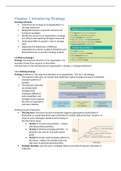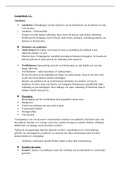Samenvatting
Summary Exploring Strategy
Samenvatting (ENGELS) van het boek Exploring Strategy, inclusief afbeeldingen van modellen. De samenvatting volgt de chronologische volgorde van het boek. Alle informatie die je nodig hebt om de leerstof jezelf eigen te maken.
[Meer zien]







